Every so often I stumble across a game that feels like it came from a previous era. Sometimes this is a conscious choice, driven by a desire to evoke the feelings of a certain period of time or to reap some of that healthy nostalgia that all us older, cashed up gamers have for the days gone by. Most often though it’s a result of some kind of development hell which has left the game out of place in the current generation, not aligning to current expectations or standards. This is how I felt stepping into Ghostwire: Tokyo as whilst it’s not bad per se, it does feel like something that would’ve been more at home if it was released say, 3 or 4 years ago which, ironically, is around when Tango Gameworks began developing the game.
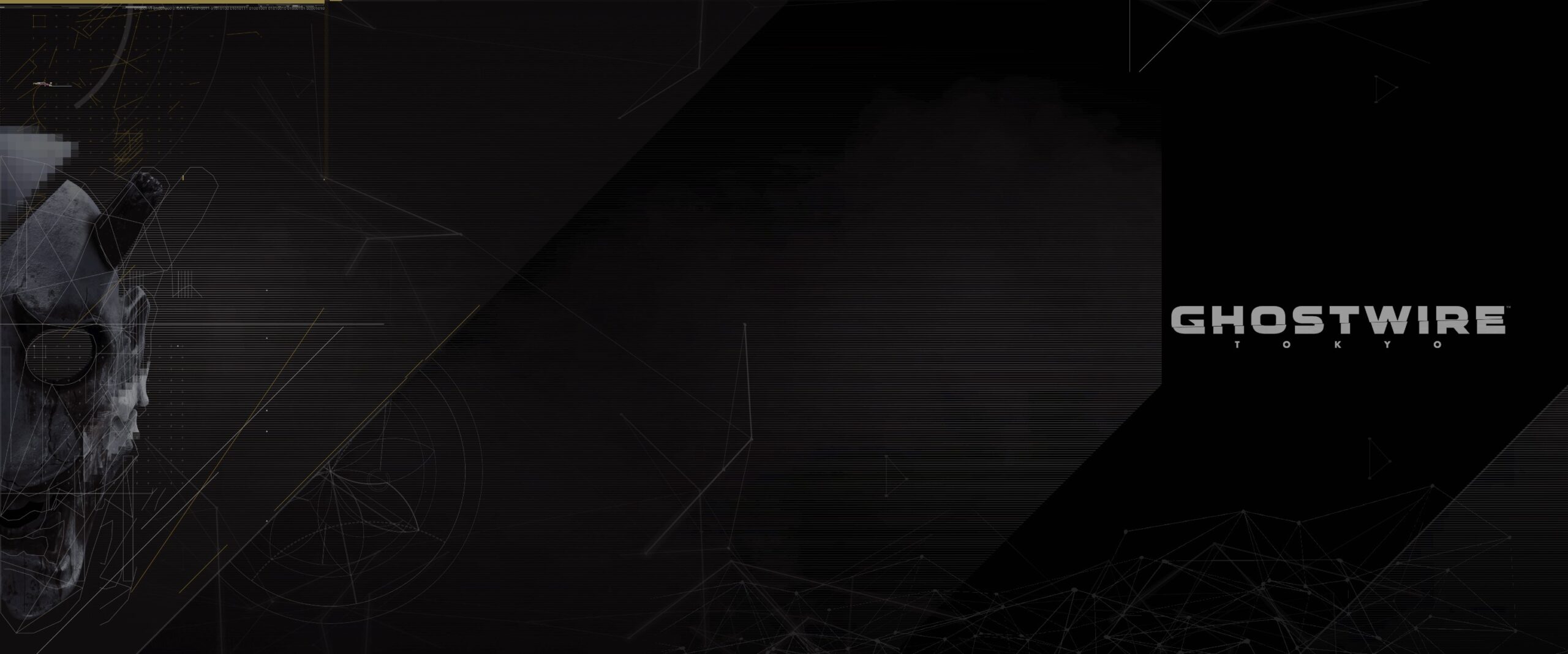
You’re dead, just another victim of a tragic car accident lying strewn across the street along with numerous others. But somehow, you got back up but you quickly realise that you might not be exactly the same as you were before. Now you’re possessed by some kind of spirit and before you can figure out exactly what’s going on a mist envelopes Tokyo, turning everyone into ghostly apparitions who are then hauled off by all manner of ghoulish looking creatures. Your new spirit friend, eager to not die along with you, grants you access to some of his powers so you can fight your way through the horde and hopefully help him in restoring Tokyo back to its original state.
The first thing that made me think that this was a previous gen game was the graphics as whilst they’re not terrible they definitely feel like they were made in the style that was most appropriate for the cross-platform release structure of the previous generation. Indeed it even uses a previous gen engine, Unreal 4, even though it’s only released on both PlayStation 5 and PC. Surprisingly this doesn’t mean good performance right off the bat, the game needing some tweaking to ensure that the frame rate remains consistent. To be sure part of the reason for these graphics is due to the large amount of detail crammed into the environments, although if I’m honest everything started to feel very samey after a few hours.
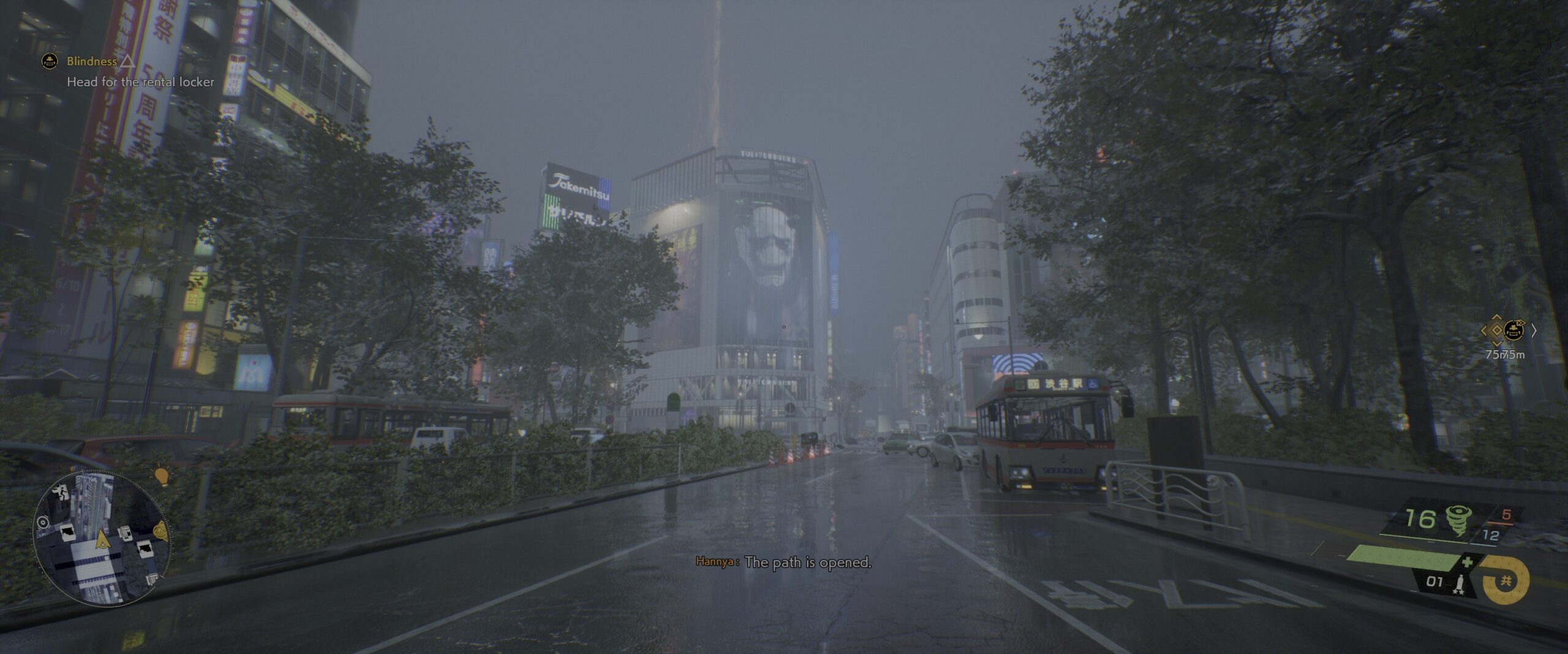
Ghostwire: Tokyo is an open world game with all the standard trappings you’ve come to expect of the genre. You’ll have your main quest that drives the narrative along, a trove of side missions that will give you currency/loot/upgrades/skill points, a handful of different collectibles and something akin to the tower climbing of Far Cry which will allow you unlock more parts of the map for you to explore. Combat is in the FPS style that reminded me of Hexen with you slinging different spells at your enemies, each of which has a different tempo and alt fire. You also have a set of non-spell weapons that you’ll be forced to make use of (more on that later). There’s also a skill tree and rudimentary inventory system to sculpt your playthrough to your liking although, truth be told, I think you could max the whole thing out quite quickly if you were so motivated. Without knowing the developer you’d swear it was another Ubisoft game as it seems to follow the majority of their open world tropes pretty closely.
Combat is, to be blunt, pretty lacklustre. Your main spell (wind?) doesn’t really hit hard at all, the second (water) doesn’t seem to hit as often as it should and the final one (FIRE) is an absolute beast but you’ll only ever have a couple uses of it before you’re on the hunt for ammo/mana/whatever it is you need to power it up again. Then there’s the other weapons which, whilst effective enough, have quite limited uses especially when the enemies drop ammo for your spells rather than your other weapons. Couple this with the somewhat clunky movement mechanics when you’re in combat and the absolutely dumb as rocks AI you’ve got a unmemorable, boring experience.
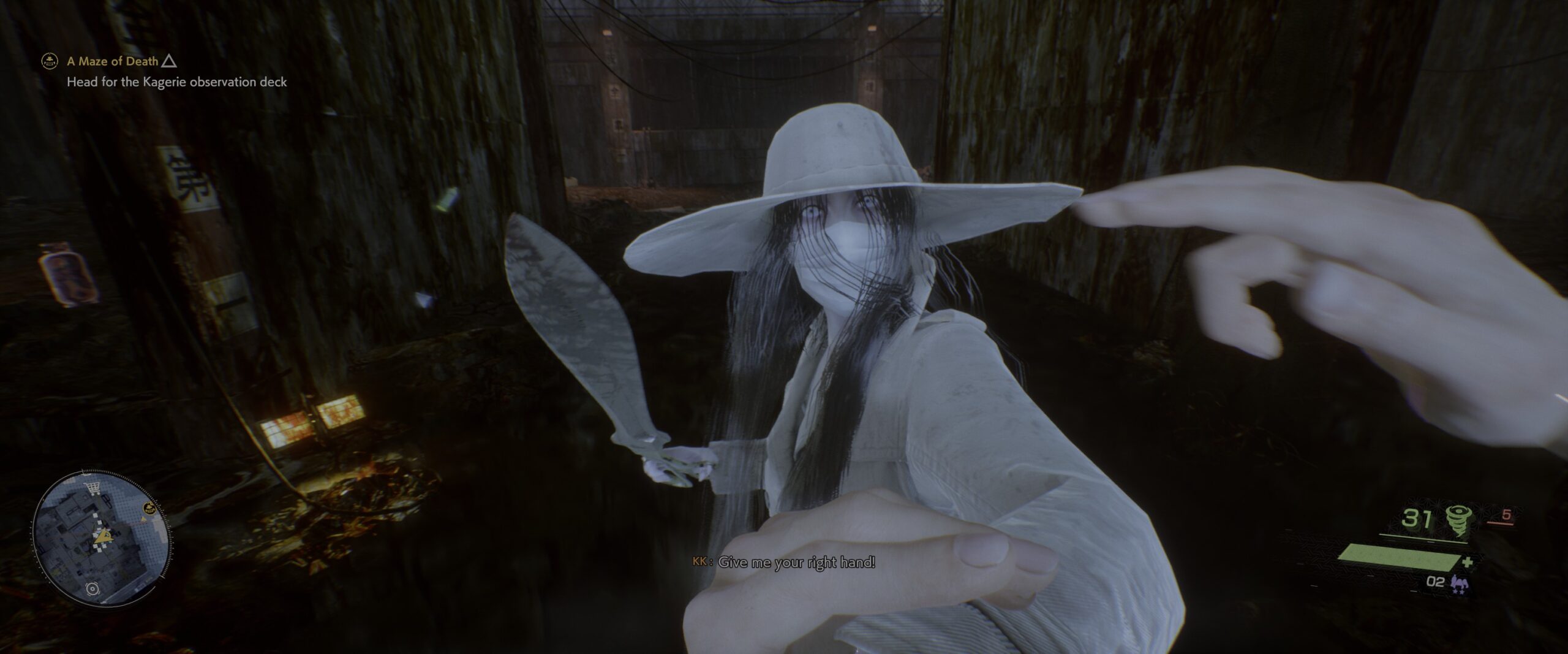
Upgrades come at a relatively steady pace but they are, for the most part, just percentage based increases or quality of life improvements. Indeed I spent the majority of my initial tranche of skill points on things that just made the repetitive tasks (like absorbing spirits) happen faster because you do that so goddamn often that speeding it up is a something you want to do so you don’t go insane. You’ll also cap yourself out pretty quickly on the more key things, either forcing you to spend points elsewhere or to see out yet another kind of upgrade resource to keep progressing. There’s also some other minor upgrades you can get from prayer beads but since you can only use a few of them you’ll end up sticking with the key ones and rarely experimenting with anything else.
Exploration is somewhat rewarding, both in terms of actual progression and the experience of hopping around a (nearly) abandoned Tokyo. There’s been a decent amount of attention paid to making the world feel more alive and bigger than just your experience in it but it falls somewhat flat due to the numerous backstreets and alleyways all looking suspiciously similar. The larger set pieces are well done but they too are hollow, most of them only having certain sections actually explorable despite looking like you might be able to get inside them and fool around.
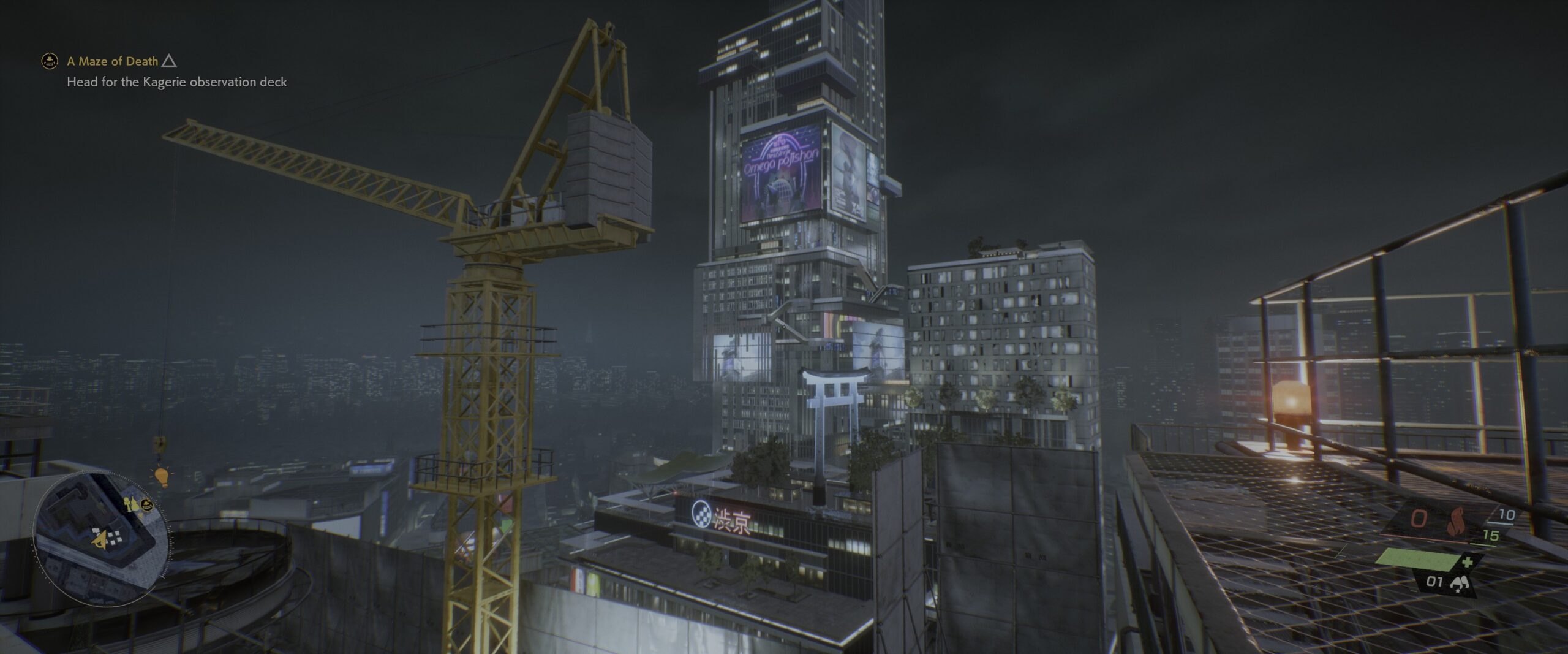
From a technical standpoint Ghostwire: Tokyo is pretty solid, only hitching up a couple times in certain places that probably just need some more optimisation. The only bone I have to pick is with the choice to remove a good half of your powers for certain sections of the game. Look, I get it, you want the player to invest in both aspects of their talent tree right? Well nothing says unfun like taking stuff away from players that they’d invested heavily in just because you want them to use something else. Whilst I only encountered this once the game did not-so-subtly hint at the fact that this would happen multiple times, something I wasn’t particularly looking forward to repeating.
After reading a few of the reviews around the place I saw the term “lightly written” to describe the core narrative and that’s honestly the best way to put it. To be sure there’s some interesting concepts and characters in it, but none of it really dives below the surface level details of…well anything and I certainly didn’t feel any emotional connection to any of the characters. It also doesn’t help that the game’s default language is Japanese with subtitles (there is a dub, it’s just not mentioned or shown prominently anywhere) and it’s very easy to miss dialogue if you’re trying to explore or do something else other than read the subtitles. I can understand the creative direction for doing it of course, and I personally don’t have much issue with subtitles usually, but given so much of the story comes from your side kick the choice made to use Japanese by default doesn’t seem like the right one, at least for baka gaijins like myself.
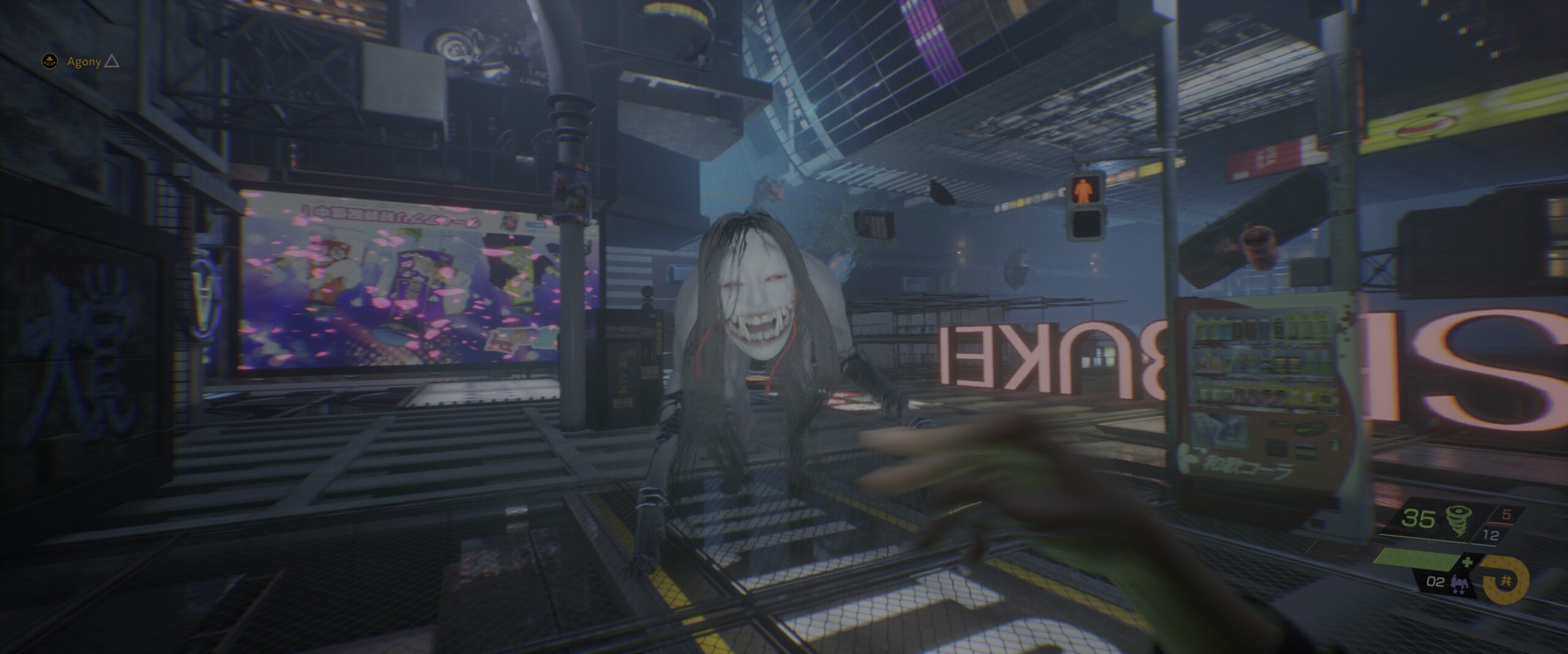
If you were to ask me about my overall impressions of Ghostwire: Tokyo I’d say it’s a solid OK. There’s nothing terrible or outright awful about the experience, but by the same token there’s nothing particularly memorable or amazing about it either. Fans of open world style games will probably find a lot to love here, and possibly those with a passion for all things Japan, but outside that I feel like Ghostwire: Tokyo has a fairly limited appeal given it’s numerous other shortcomings. I’m also not sure it’ll improve radically over time either so it’s definitely one of those games that, should you still be wanting to play it after reading all this, you should wait until it’s deeply discounted
Rating: 7/10
Ghostwire: Tokyo is available on PlayStation 5 and PC right now for $99.95. Game was played on the PC with a total of 5.8 hours playtime and 23% of the achievements unlocked.



